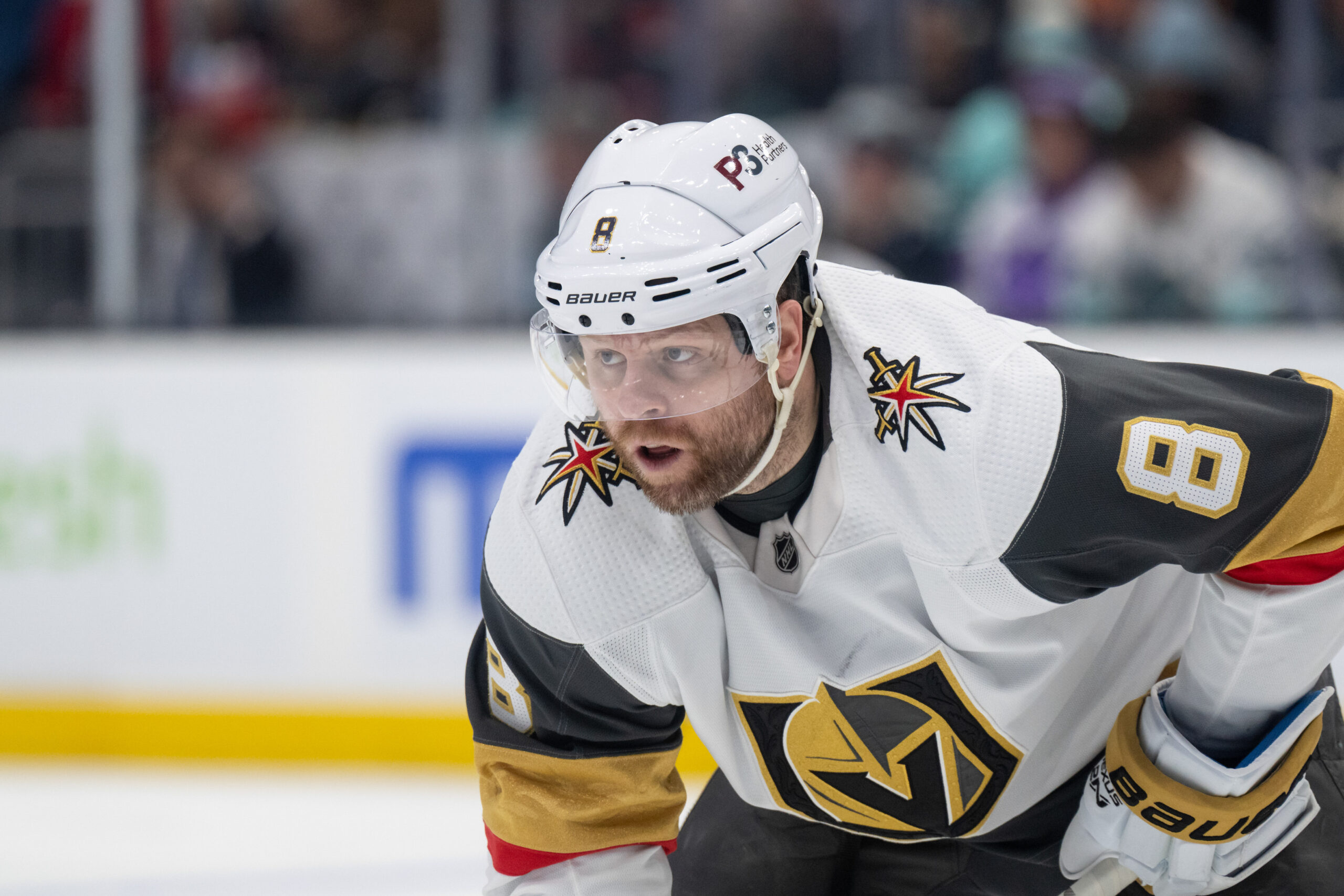This article examines Jim Rutherford‘s five worst trades as Penguins General Manager. Rutherford is fondly remembered for assembling Cup-winning rosters. Jim Rutherford’s tenure as the Pittsburgh Penguins GM was remarkable. Known for his aggressive approach to team building, Rutherford retooled the team into back-to-back Stanley Cups. Rutherford executed over 50 trades during his time with the team. While this list is capped at five, it’s worth noting that many other remarkable trades were made as well. These five, however, were also the most influential in the Penguins’ consecutive Stanley Cup victories in 2016 and 2017.
Jim Rutherford’s Five Best Trades
#5. Nick Bonino Trade
Prior to this trade, the Pittsburgh Penguins had a large hole in the bottom six. Jordan Staal was traded in 2011 to the Carolina Hurricanes. While Brandon Sutter was adequate, he was not able to contribute the way the Penguins needed out of a third-line centre. Bonino’s acquisition proved crucial for the Penguins’ depth. On July 28, 2015, the Penguins acquired Bonino, Adam Clendening, and a 2016 2nd-round pick from the Vancouver Canucks in exchange for Brandon Sutter and a 2016 3rd-round pick. Bonino’s defensive reliability and tendency to score timely goals made him an integral piece in the Penguins’ back-to-back Cup victories.
Impact
Bonino and newly acquired fourth-line centre Matt Cullen provided the Penguins with incredible depth down the middle. This allowed them to roll four strong lines. Bonino provided depth scoring with 66 points in 147 games with the team. Bonino’s chemistry with Carl Hagelin and Phil Kessel as part of the “HBK Line” created matchup nightmares for opponents, especially during the 2016 Stanley Cup run. His performance skyrocketed in these playoffs, with 18 points in 24 games in a shut-down role for the team.
Trade Analysis
The trade added depth and value to the Penguins roster. While Sutter was an adequate centre, Bonino was the better player in the deal. Additionally, the Penguins acquired a depth defenceman in Adam Clendening. Finally the Penguins upgraded a third-round pick to a second-round pick. Acquiring the perfect centre for the team while upgrading on draft picks makes this trade a highlight of Rutherford’s.
#4. Justin Schultz Trade
Justin Schultz revitalized his career in Pittsburgh and became a key offensive defenceman for the Penguins. Prior to this trade, Schultz floundered in Edmonton. While he had a lot of promise as a young defenceman, he could never put his game together for the Oilers. On February 27, 2016, the Penguins acquired Schultz from the Edmonton Oilers in exchange for a 2016 3rd-round pick. Schultz’s ability to move the puck and contribute on the power play was vital in the Penguins’ success. He would prove to be particularly useful during the 2017 Stanley Cup run. Schultz’s progression into a premier right-handed defenceman came at a time the Penguins needed it most.
Impact
Schultz’s offensive contributions and ability to quarterback the power play added a new dimension to the Penguins’ attack. Schultz played well following his arrival in Pittsburgh in 2016. He scored eight points in 18 games down the stretch. While he proved useful during the 2016 Cup run, it was the next season where role expanded. Following season -ending neck surgery for top defenceman Kris Letang, Schultz stepped up into Letang’s role. Aiming to replace Letang’s stellar offensive production, Schultz scored 12 goals and 51 points in 78 games. He would continue his excellent two-way play with 13 points in 21 games in a significant role during the 2017 Stanley Cup run.
Trade Analysis
Acquiring Schultz for a third-round pick was a low-risk, high-reward move. GM Jim Rutherford’s tenure with the Penguins became marked with reclamation projects such as Schultz. The GM found a way to identify and acquire players needing a change of scenery to flourish. Schultz’s transformation into a top-four defenseman was a testament to the Penguins’ development system and coaching staff.
#3. Trevor Daley Trade
The Trevor Daley traded had the dual benefit of adding much-needed mobility and offensive capability to the Penguins’ blue line while offloading a boat anchor of a contract. On December 14, 2015, the Penguins acquired Daley from the Chicago Blackhawks in exchange for Rob Scuderi. Daley’s contributions were significant during the 2016 and 2017 Stanley Cup runs, he provided experience and reliability to the blueline. His ability to move the puck and join the rush fit in with the Penguins’ transition game, making him a formidable option on both ends of the ice.
Impact
Daley’s speed and puck-moving abilities transformed the Penguins’ defence. Letang was the primary offensive threat from the blueline for the team. After him however, the defence was shallow. The arrival of Daley provided a new dimension to the defence of the blueline. The left-handed defender scored 22 points in 53 games following his trade to the Penguins. Daley’s contributions went into the playoffs, where he played an integral role in both Cup wins.
Trade Analysis
Similar to the Schultz trade, Daley’s acquisition was Penguins GM Jim Rutherford’s attempt at finding impact talent through reclamation projects. The Daley trade had added value as Scuderi had become a liability for the team. His play had declined mightily since his first stint with the team. Trading his contract for a player who would play a role in winning back-to-back Cups is an incredible move on Jim Rutherford’s resume as Penguins GM.
#2. Patric Hornqvist Trade
Jim Rutherford’s first acquisition as Penguins GM was a significant one. On June 27, 2014, the Penguins acquired Hornqvist and Nick Spaling from the Nashville Predators in exchange for James Neal. Patric Hornqvist brought an offensive element the Penguins were desperately. His grit and net-front presence transformed the way the Penguins top six attacked the net. While the Penguins did get some use out of Nic Spaling, Hornqvist’s gritty style and ability to play tough in the dirty areas were far more important during the Penguins’ consecutive Stanley Cup victories. His leadership on and off the ice made him an invaluable asset to the team’s success.
Impact
Hornqvist’s ability to score from in front of the net and his relentless work ethic set the tone for the Penguins’ aggressive style of play. He made an immediate impact, scoring 25 goals and 51 points in 64 games in his first season with the team. Hornqvist continued to excel offensively for the team, with four different 20 goal seasons for the organization. His presence was felt in every game, particularly in the playoffs where his big goals and physical play were crucial.
Trade Analysis
Trading for Hornqvist brought in a player who exemplified the hard-working, tenacious style that the Penguins needed. This trade is also unique in that it can be considered a win-win. Neal went on to play very well for Nashville. He was a significant player during the Predators 2017 run to the Cup Finals. Meanwhile, the Penguins got a forward that became crucial to the team’s offensive system. Hornqvist’s ability to score clutch goals and relentless work ethic were instrumental in the Penguins’ playoff success.
#1. Phil Kessel Trade
The Phil Kessel trade was perhaps Jim Rutherford’s most important move as Penguins GM. On July 1, 2015, the Penguins acquired Kessel, Tyler Biggs, Tim Erixon, and a 2016 2nd round pick from the Toronto Maple Leafs in exchange for Nick Spaling, Scott Harrington, Kasperi Kapanen, a 2016 1st round pick, and a 2016 3rd round pick. With weeks of lead-up, Jim Rutherford pulled the trigger on a move to bring a superstar into Pittsburgh. Kessel’s scoring prowess and playmaking abilities significantly boosted the Penguins’ offensive depth. While it was originally thought Kessel would play with either of Crosby or Malkin, he ended up playing a crucial role on the “HBK Line” with Hagelin and Bonino instead.
Impact
Kessel’s addition gave the Penguins a potent offensive weapon who could alter the outcomes of games with his speed and scoring ability. While Kessel and the rest of the Penguins started the 2016 season slow, his play picked up by the end of the regular season. Kessel scored 26 goals and 59 points in 82 games during his first season with the team. He added to this in the playoffs, scoring 22 points in 24 games to lead the Cup champions. Kessel would go on to score 70 or more points in his next three seasons with the team before being dealt to the Arizona Coyotes. Secondary pieces Tyler Biggs and Tim Erixon and 2nd round pick Kasper Bjorkqvist did not end up panning out into NHL players.
Trade Analysis
Acquiring a player of Kessel’s calibre without giving up a significant roster player was a game-changer for the Penguins. The Toronto Maple Leafs were heading into a long-needed teardown, meaning they were not interested in impact players during their fire sale. Jim Rutherford’s payment for Kessel was made of almost entirely futures, with the only NHL caliber player being depth forward Nick Spaling. His immediate impact on the team’s offense and his ability to perform in high-pressure situations underscored the value of this trade. Kessel’s presence on the roster was a major factor in the Penguins’ back-to-back Stanley Cup victories.
The Best of the Best
Jim Rutherford’s tenure as Penguins GM brought Stanley Cup glory to the team two years in a row. Through his outstanding track record, these five trades stand out as the most influential in securing back-to-back Cups for the Penguins. Although the end of Jim Rutherford’s tenure as Penguins GM was contentious, his trades early in his time with the team cemented the team’s ability to win the Cup.
Main Photo: Stephen Brashear-USA TODAY Sports






